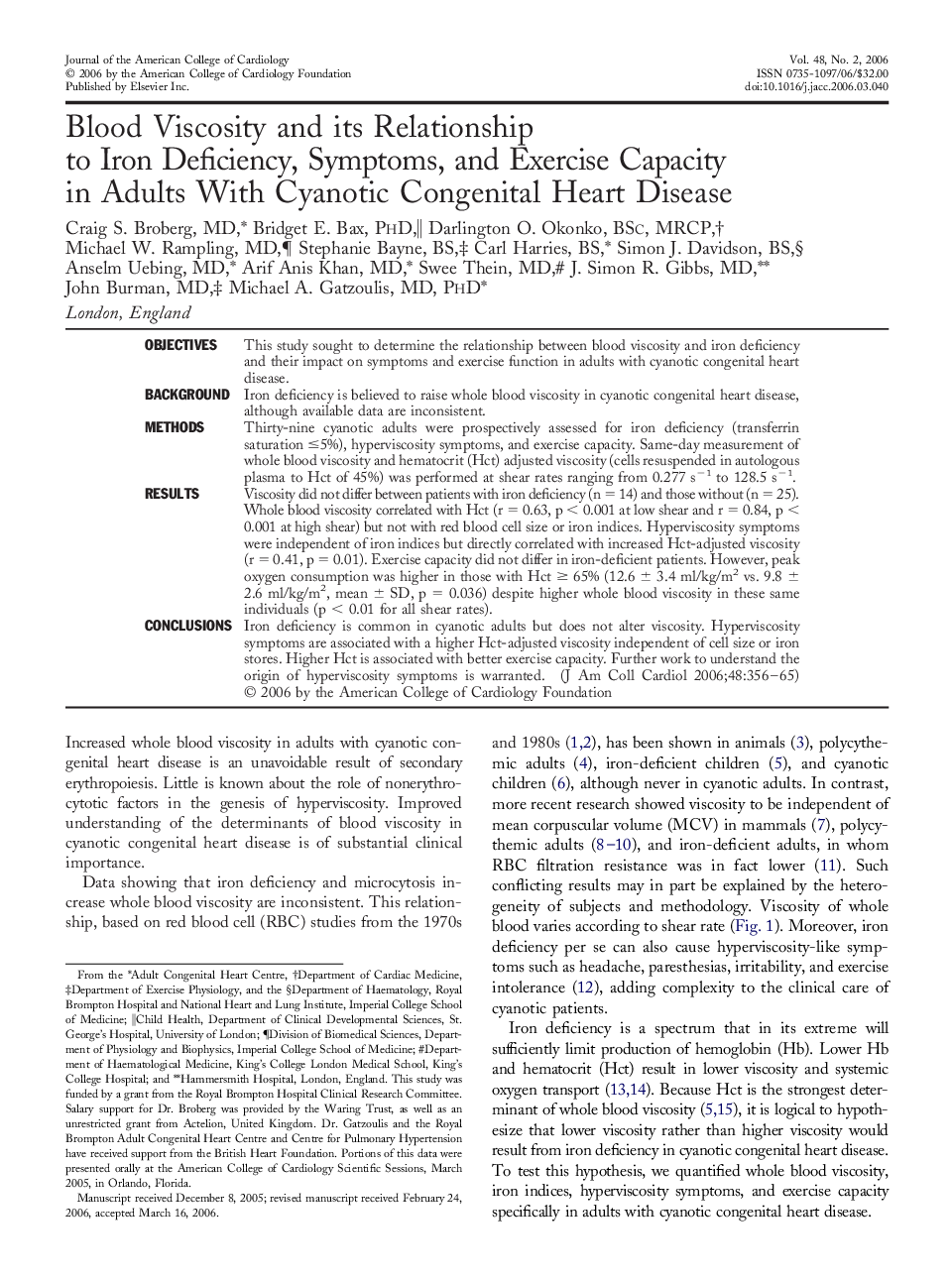| Article ID | Journal | Published Year | Pages | File Type |
|---|---|---|---|---|
| 2952046 | Journal of the American College of Cardiology | 2006 | 10 Pages |
ObjectivesThis study sought to determine the relationship between blood viscosity and iron deficiency and their impact on symptoms and exercise function in adults with cyanotic congenital heart disease.BackgroundIron deficiency is believed to raise whole blood viscosity in cyanotic congenital heart disease, although available data are inconsistent.MethodsThirty-nine cyanotic adults were prospectively assessed for iron deficiency (transferrin saturation ≤5%), hyperviscosity symptoms, and exercise capacity. Same-day measurement of whole blood viscosity and hematocrit (Hct) adjusted viscosity (cells resuspended in autologous plasma to Hct of 45%) was performed at shear rates ranging from 0.277 s−1to 128.5 s−1.ResultsViscosity did not differ between patients with iron deficiency (n = 14) and those without (n = 25). Whole blood viscosity correlated with Hct (r = 0.63, p < 0.001 at low shear and r = 0.84, p < 0.001 at high shear) but not with red blood cell size or iron indices. Hyperviscosity symptoms were independent of iron indices but directly correlated with increased Hct-adjusted viscosity (r = 0.41, p = 0.01). Exercise capacity did not differ in iron-deficient patients. However, peak oxygen consumption was higher in those with Hct ≥ 65% (12.6 ± 3.4 ml/kg/m2vs. 9.8 ± 2.6 ml/kg/m2, mean ± SD, p = 0.036) despite higher whole blood viscosity in these same individuals (p < 0.01 for all shear rates).ConclusionsIron deficiency is common in cyanotic adults but does not alter viscosity. Hyperviscosity symptoms are associated with a higher Hct-adjusted viscosity independent of cell size or iron stores. Higher Hct is associated with better exercise capacity. Further work to understand the origin of hyperviscosity symptoms is warranted.
